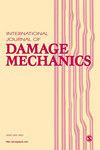Metallic contaminants in wood panel production process: Evaluating press plate damage and detecting potential using IR thermography and spectroscopy
IF 3.9
2区 工程技术
Q2 MATERIALS SCIENCE, MULTIDISCIPLINARY
引用次数: 0
Abstract
In the wood panel industry, metallic contaminants raise significant concerns, especially regarding the press plate's surface integrity, which requires a thorough inspection. This study investigated the effect of metallic contaminants on press plate damage and evaluated the use of infrared thermography (IRT) and infrared (IR) spectroscopy as non-destructive testing (NDT) methods for detecting these contaminants in wood panel manufacturing. Metallic contaminants embedded within lab-scale wood panels demonstrated their impact on the surface quality of both the press plate and the resulting panels. Moreover, confocal laser microscope analysis revealed that the surface roughness of the press plate surface was influenced by the specific alloy composition of contaminants, with steel and chromium contaminants exhibiting the more severe damage (e.g., mean roughness values of 59,80 and 84,64 μm, respectively). Thermography images exhibited the efficacy of IRT in detecting contaminants close to the surface of thin panels. However, an advanced camera is recommended for thicker panels and deeper contaminants to obtain a more accurate inspection. The Fourier-transform infrared spectroscopy (FTIR) evaluation revealed the presence of the metal-oxygen vibration band at approximately 668 cm木板生产过程中的金属污染物:利用红外热成像和光谱学评估压板损坏和检测潜力
在木板行业中,金属污染物引起了人们的极大关注,特别是在压板的表面完整性方面,这需要彻底的检查。本研究调查了金属污染物对压板损伤的影响,并评估了红外热成像(IRT)和红外(IR)光谱作为无损检测(NDT)方法在木板制造中检测这些污染物的使用。金属污染物嵌入在实验室规模的木板中,证明了它们对压板和最终板的表面质量的影响。此外,激光共聚焦显微镜分析表明,冲压件表面粗糙度受污染物的特定合金成分的影响,其中钢和铬污染物的损伤更为严重(平均粗糙度值分别为59、80和84、64 μm)。热成像图像显示了IRT在检测靠近薄板表面的污染物方面的有效性。但是,对于较厚的面板和较深的污染物,建议使用先进的相机以获得更准确的检查。傅里叶变换红外光谱(FTIR)评估显示,在所有合金成分中都存在大约668 cm−1的金属-氧振动带,这表明它有可能作为检测金属污染物的可靠参考。
本文章由计算机程序翻译,如有差异,请以英文原文为准。
求助全文
约1分钟内获得全文
求助全文
来源期刊

International Journal of Damage Mechanics
工程技术-材料科学:综合
CiteScore
8.70
自引率
26.20%
发文量
48
审稿时长
5.4 months
期刊介绍:
Featuring original, peer-reviewed papers by leading specialists from around the world, the International Journal of Damage Mechanics covers new developments in the science and engineering of fracture and damage mechanics.
Devoted to the prompt publication of original papers reporting the results of experimental or theoretical work on any aspect of research in the mechanics of fracture and damage assessment, the journal provides an effective mechanism to disseminate information not only within the research community but also between the reseach laboratory and industrial design department.
The journal also promotes and contributes to development of the concept of damage mechanics. This journal is a member of the Committee on Publication Ethics (COPE).
 求助内容:
求助内容: 应助结果提醒方式:
应助结果提醒方式:


